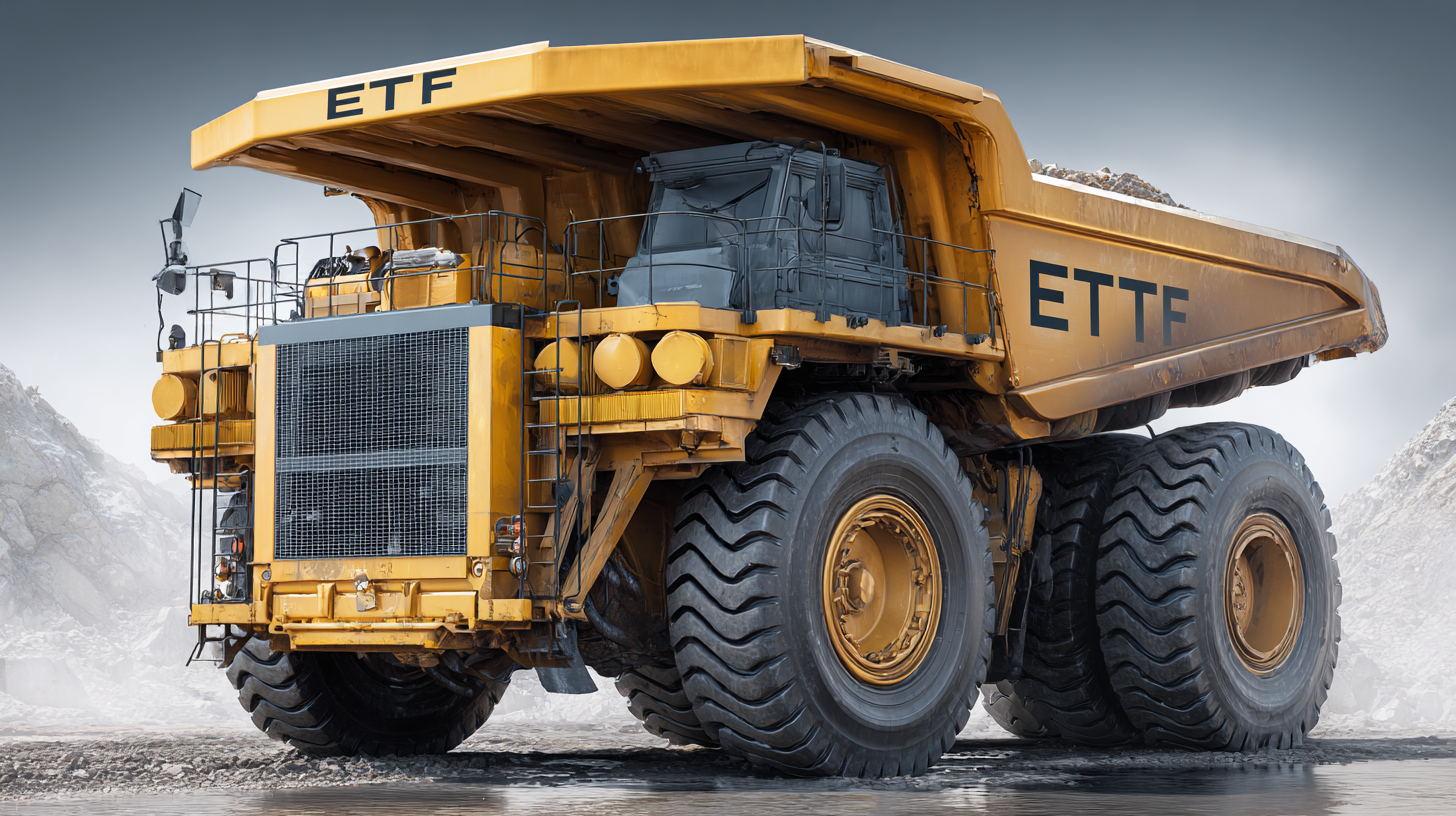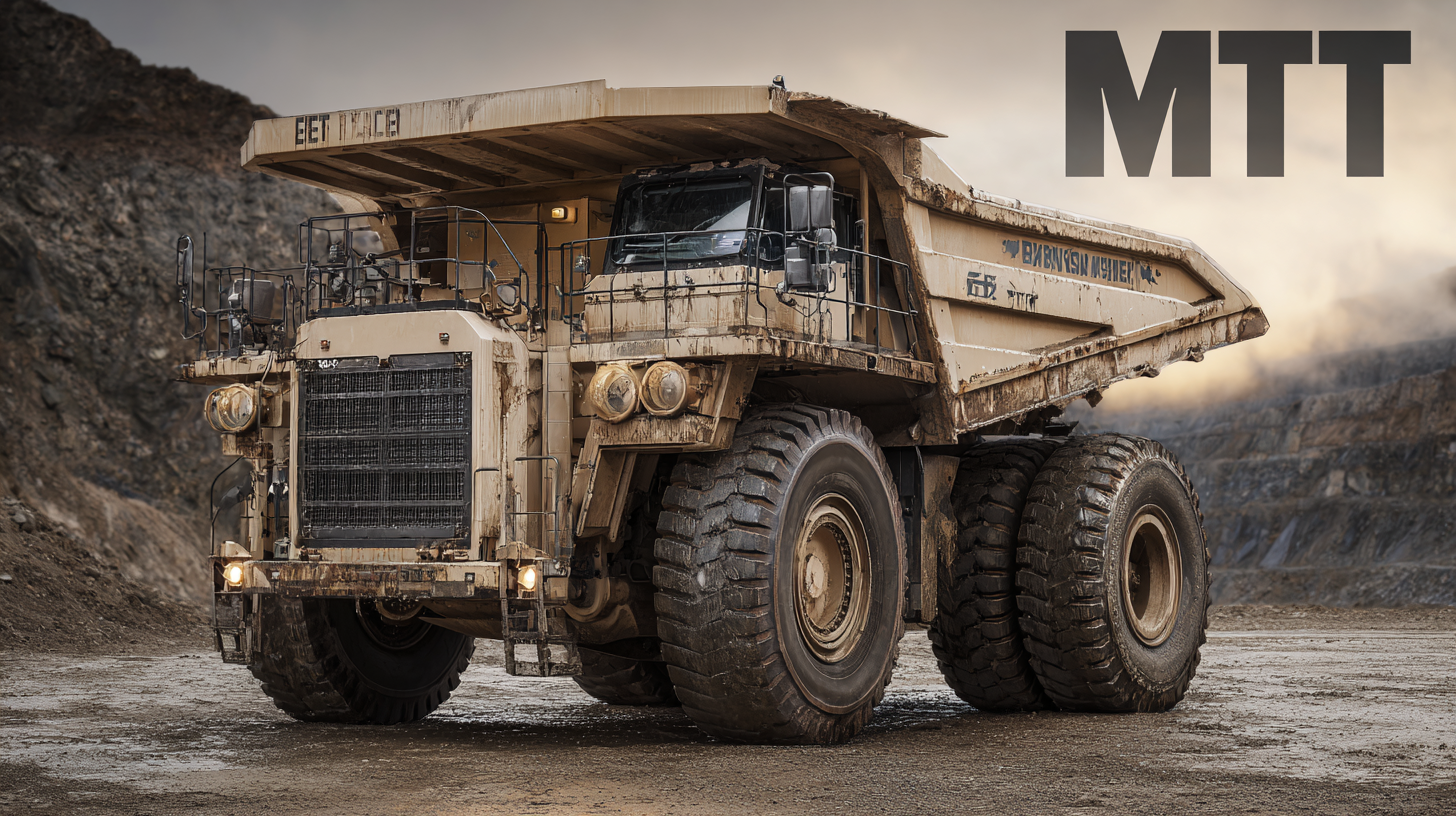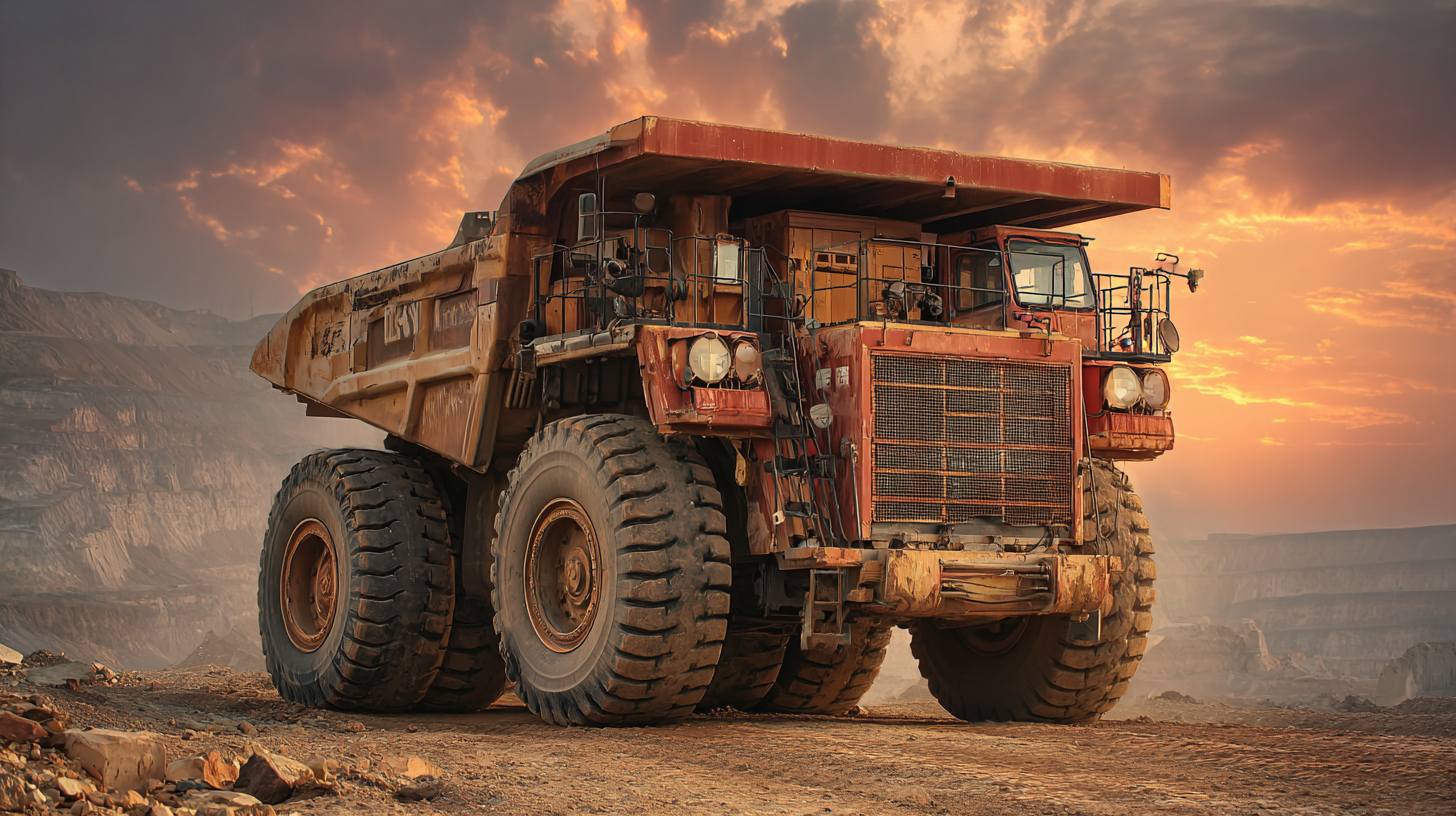As the global mining sector evolves, the demand for advanced machinery like the Etf Mining Truck has surged, driven by the industry's need for efficiency and sustainability. According to a recent market analysis by GlobalData, the global mining equipment market is expected to reach $138.9 billion by 2025, highlighting the significant investment in innovative mining solutions. The Etf Mining Truck's cutting-edge technology and robust design play a crucial role in meeting these demands, offering enhanced productivity and operational safety. Furthermore, the growing emphasis on eco-friendly practices within the mining industry aligns with the attributes of the Etf Mining Truck, making it an appealing choice for global buyers looking to improve their operational efficiency while adhering to environmental standards. As we explore the key features that make the Etf Mining Truck an ideal choice, we will shed light on its competitive advantages in the context of the industry's future landscape.

When evaluating the best ETF mining trucks suited for global markets, several key features emerge as essential. First and foremost, durability is paramount. Mining trucks operate in some of the harshest conditions, often navigating rugged terrains and extreme weather. A truck built with high-quality materials and robust engineering ensures longevity and minimizes downtime due to repairs.
Another critical feature is the truck's capacity and efficiency. With rising demands in the mining industry, global buyers prioritize trucks that offer greater payload capacities while maintaining fuel efficiency. This balance not only boosts productivity but also reduces operational costs, making them a favorable investment for mining companies.
Tip: When selecting an ETF mining truck, consider models that provide advanced technology integrations, such as GPS tracking and telematics systems. These features enable real-time monitoring of the truck's performance, ensuring that operators can make informed decisions to enhance efficiency and safety on the job site. Always look for trucks with customizable options that can be tailored to specific operational needs for better performance.
When it comes to ETF mining trucks, understanding the different types and their applications is crucial for global buyers. The market for mining trucks is primarily driven by their efficiency and productivity in harsh mining environments. According to a report from Research and Markets, the global mining truck market is expected to reach $7.94 billion by 2026, driven by the increasing demand for minerals and metals. This growth is largely fueled by the rise in electric and hybrid mining trucks that cater to sustainability and operational cost reduction.
There are several types of ETF mining trucks available, including rigid trucks, articulated trucks, and ultra-class trucks. Rigid trucks, known for their high load capacity, are ideal for large-scale operations and can carry loads exceeding 400 tons. Articulated trucks, on the other hand, offer greater maneuverability and are preferred in uneven terrain, making them invaluable for smaller mining operations. Data from Statista indicates that by 2022, the demand for articulated trucks is projected to increase by 15%, highlighting their growing importance in the mining sector. Understanding these types can help buyers make informed decisions suited to their operational needs.

The shift towards electric mining trucks, particularly Electric Drive Trucks (ETF), presents significant advantages over traditional diesel options. According to a study by the International Council on Mining and Metals (ICMM), electric vehicles can reduce greenhouse gas emissions by up to 30% compared to diesel trucks. This reduction is crucial in the mining sector, where the demand for sustainable practices is becoming increasingly important. Furthermore, electric mining trucks offer greater energy efficiency; a report from the Deloitte Insights indicates that electric trucks can operate at about 40% lower energy costs than their diesel counterparts, directly impacting the bottom line in mining operations.
In addition to cost savings, electric ETF mining trucks can operate in more diverse environments. Diesel trucks are limited by emissions regulations and performance in enclosed spaces, whereas electric trucks can provide a cleaner and quieter operation, making them ideal for underground mining applications. A recent market forecast by Mordor Intelligence predicts that the electric mining truck segment will grow at a compound annual growth rate (CAGR) of over 20% in the coming years, driven by advancements in battery technology and the increasing adoption of sustainable mining practices. Global buyers seeking efficiency, environmental sustainability, and regulatory compliance are beginning to recognize the long-term benefits of switching to electric mining trucks.
Investing in high-quality ETF mining trucks can yield significant benefits for global buyers, particularly when conducting a comprehensive cost-benefit analysis. These specialized vehicles are designed to enhance operational efficiency in mining operations, making them a crucial asset for companies looking to optimize productivity. When evaluating their costs, buyers should consider not only the initial purchase price but also factors such as maintenance expenses, fuel efficiency, and the overall durability of the trucks. High-quality trucks may come with a higher upfront cost, but their long-term performance can lead to reduced operational disruptions and lower maintenance costs, ultimately making them a smart investment.
On the other hand, the benefits of investing in superior ETF mining trucks extend beyond just financial metrics. These trucks are typically equipped with advanced technology and improved safety features, ensuring a safer working environment for operators while maximizing output. Additionally, the reliability of high-quality trucks can mitigate the risks associated with equipment failure, allowing companies to maintain a consistent production schedule. Therefore, when conducting a cost-benefit analysis, it becomes evident that the upfront investment in premium ETF mining trucks offers both immediate and long-term returns, positioning companies for sustained success in the competitive mining industry.
| Metric | Value | Description |
|---|---|---|
| Initial Cost | $750,000 | Average purchase price for high-quality ETF mining trucks. |
| Operating Cost | $150/hour | Estimated operating cost including fuel, maintenance, and labor. |
| Fuel Efficiency | 10 mpg | Miles per gallon average for ETF mining trucks. |
| Lifespan | 10 years | Expected lifespan with proper maintenance. |
| Resale Value | $300,000 | Estimated resale value after 10 years. |
| Overall ROI | 10% | Estimated return on investment over the lifespan of the truck. |
| Maintenance Frequency | Every 500 hours | Recommended maintenance interval to ensure optimal performance. |
The evolution of mining trucks has reached new heights, driven by technological innovations that aim to enhance performance and attract global buyers. Among these advancements, the integration of AI and electric power stands out. The latest models are not only designed for efficiency but also prioritize environmental sustainability. By utilizing electric power, these trucks eliminate harmful emissions, a critical factor in today's eco-conscious market.

Additionally, cutting-edge web mining mechanisms have democratized access to mining technology, enabling a broader pool of participants to engage without the need for expensive equipment. This shift not only lowers the barrier to entry but also fosters a community-oriented approach to mining operations. As investment management firms consider the landscape for 2025, innovations in mining technology, such as battery-operated modular designs, are likely to become pivotal in defining operational standards and setting new performance metrics. These advancements promise enhanced productivity while addressing the industry's pressing sustainability challenges.